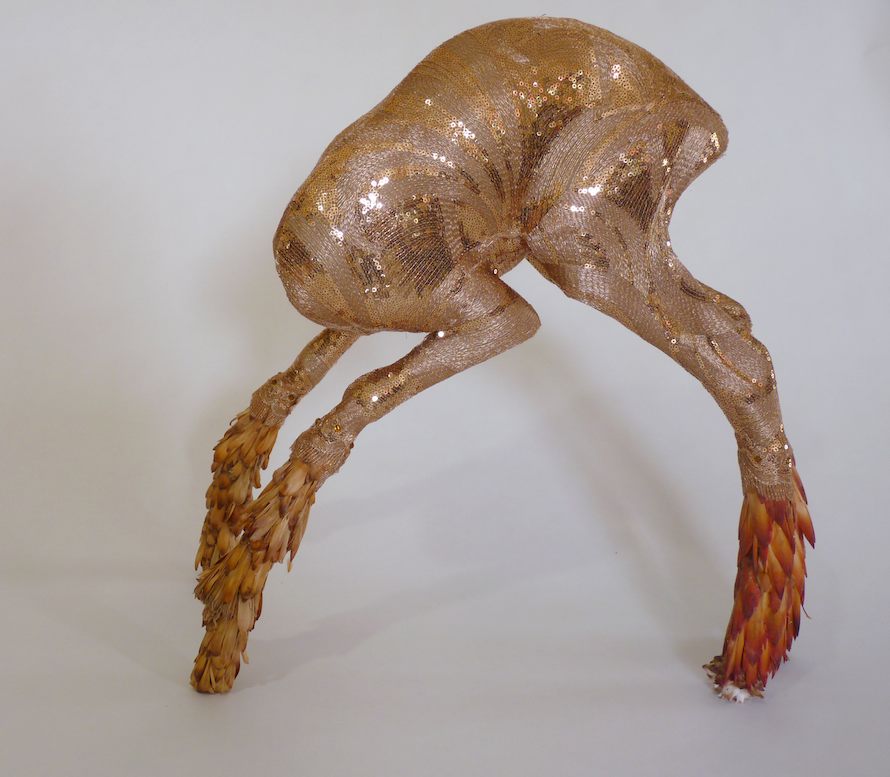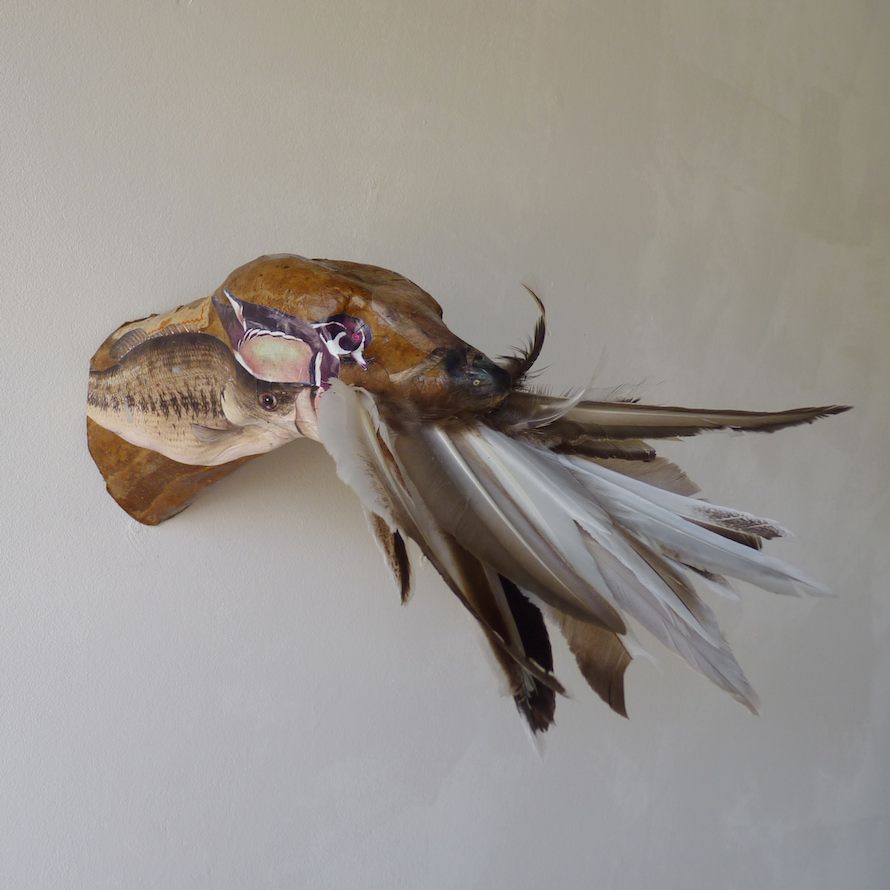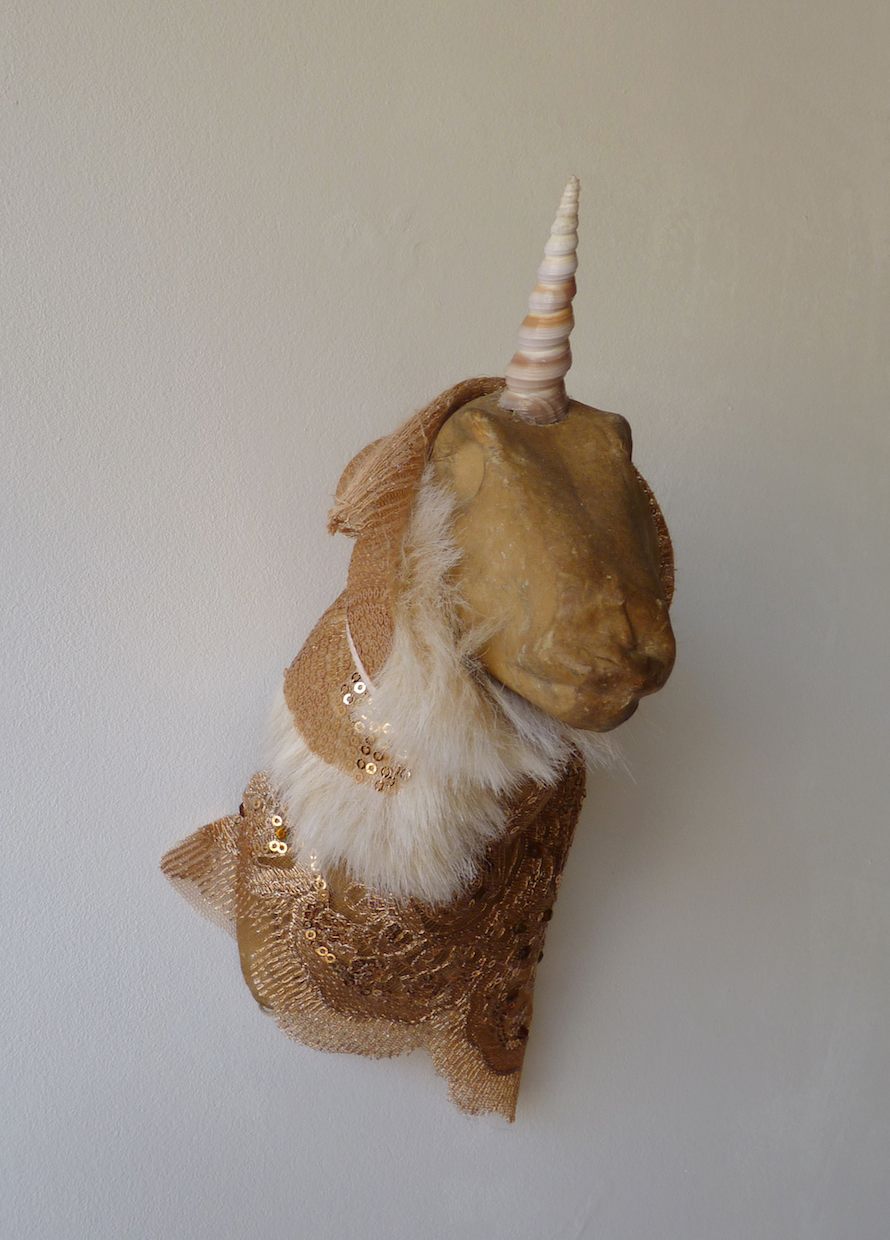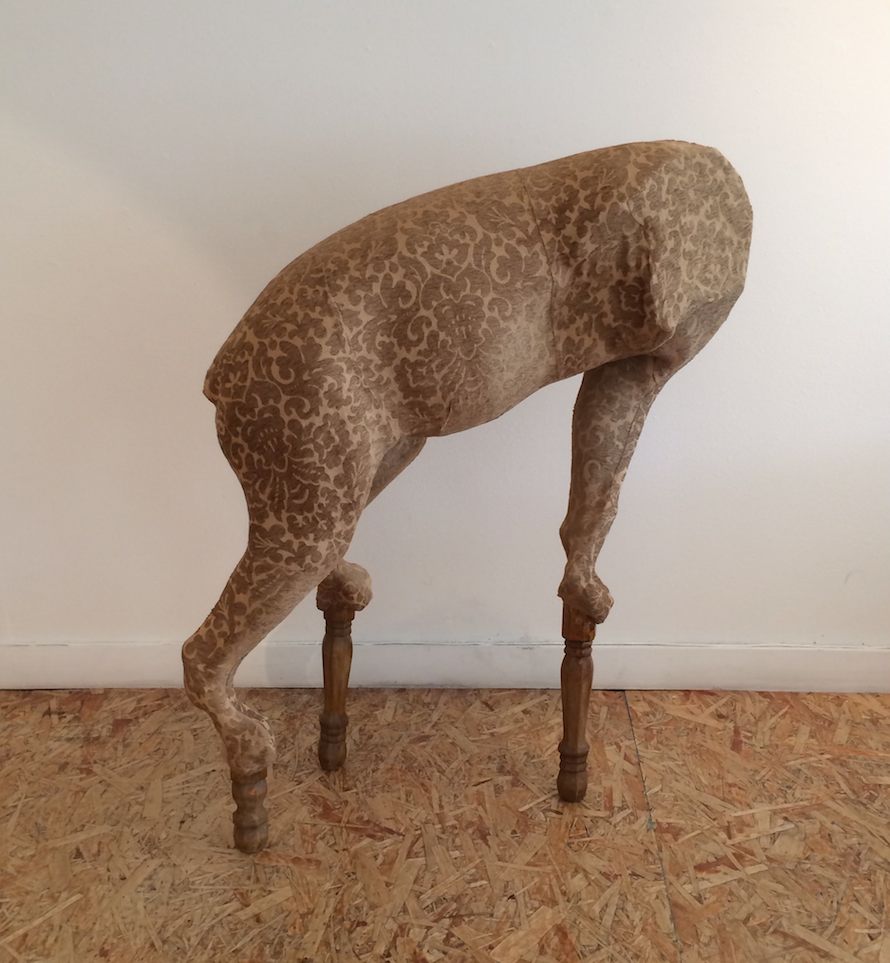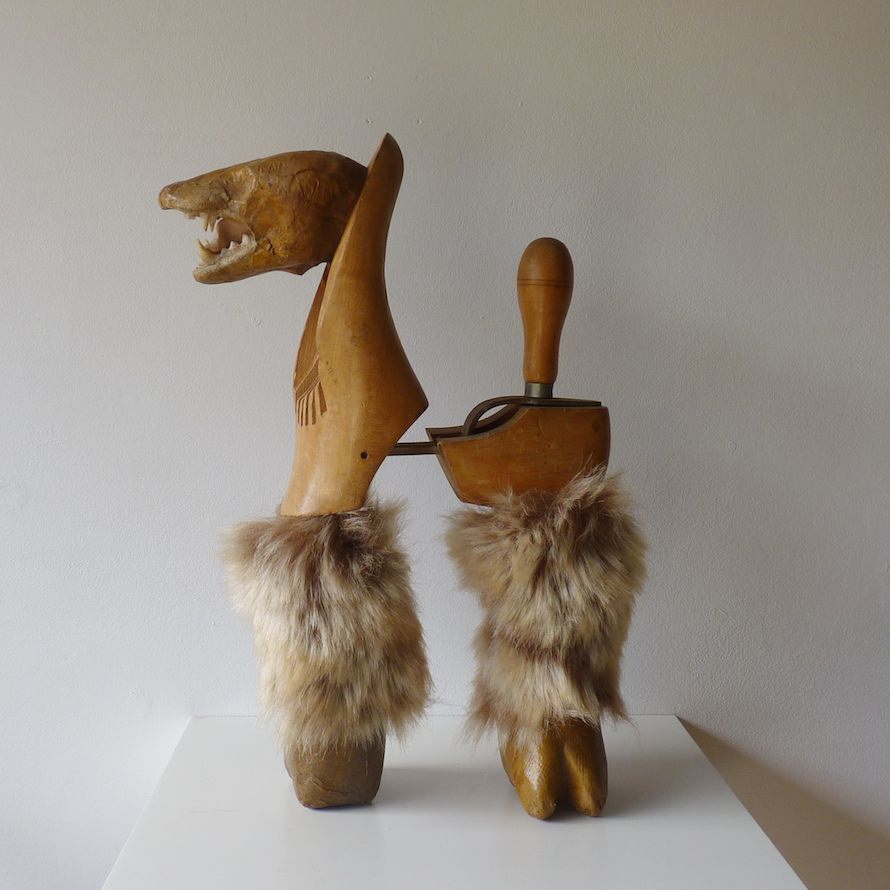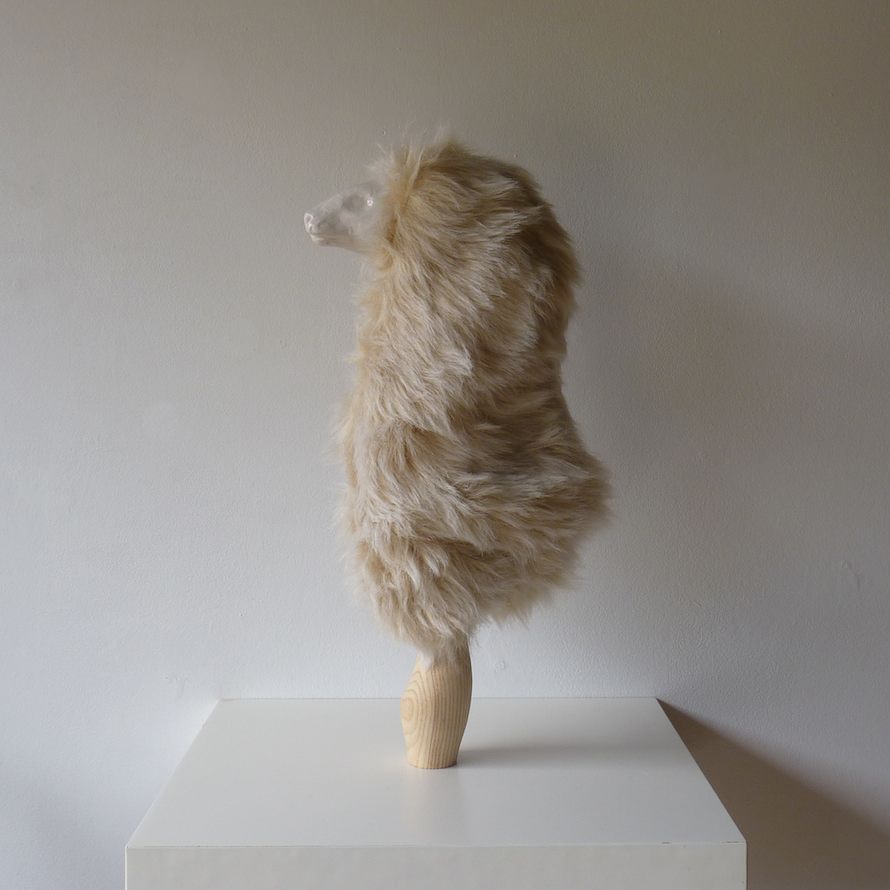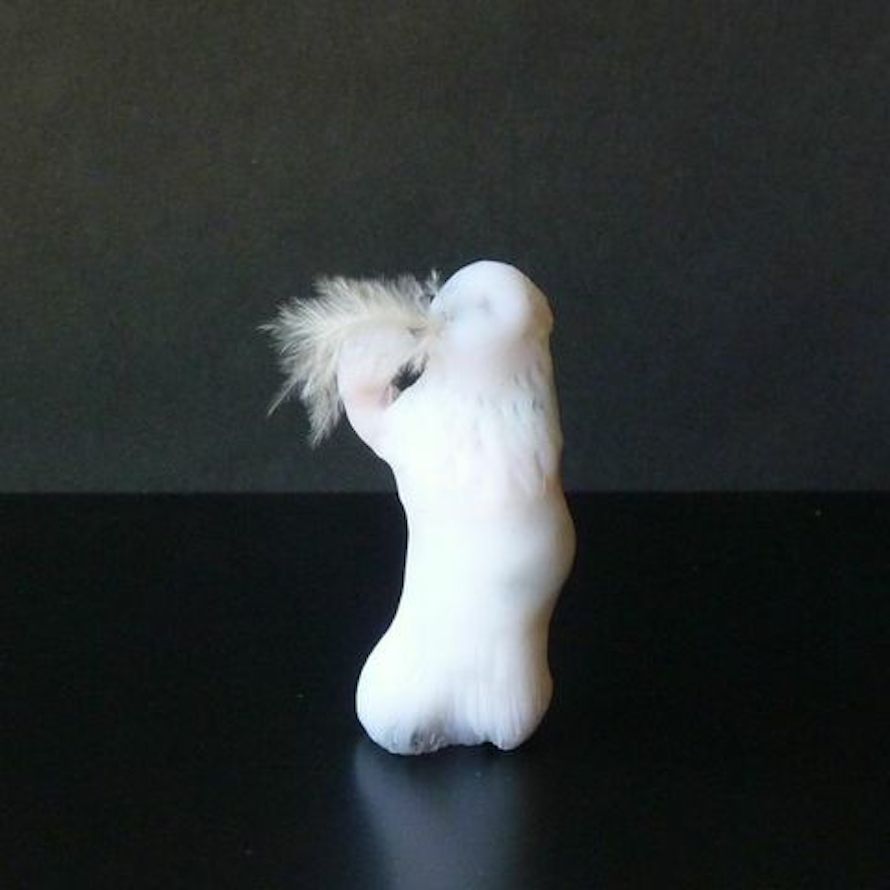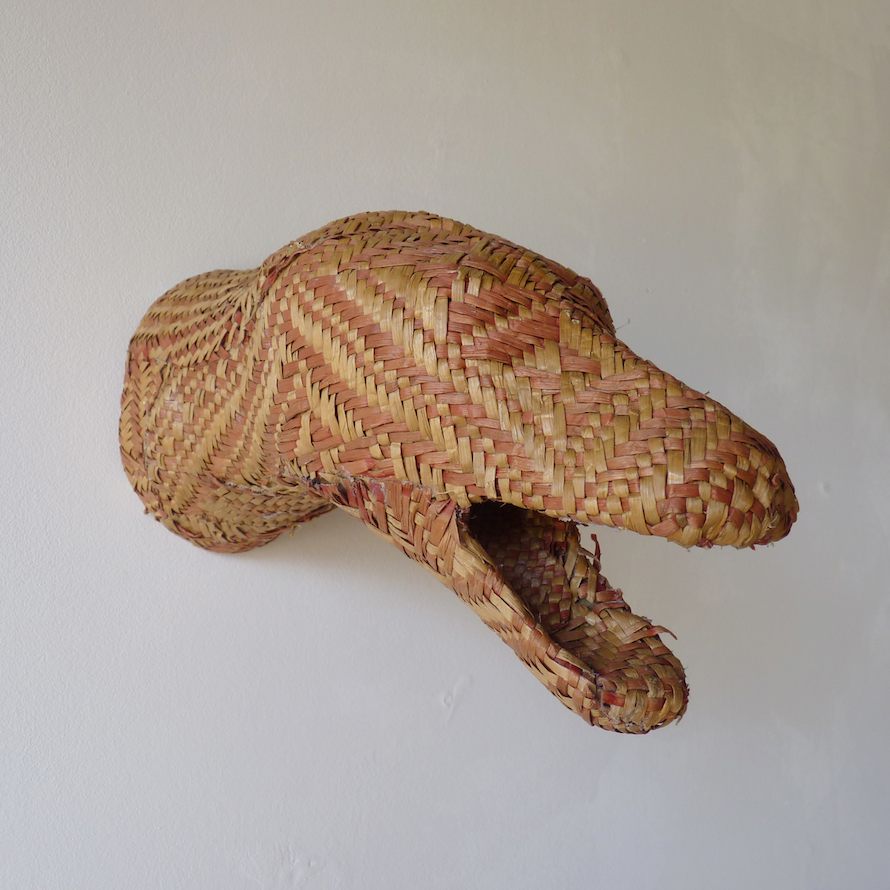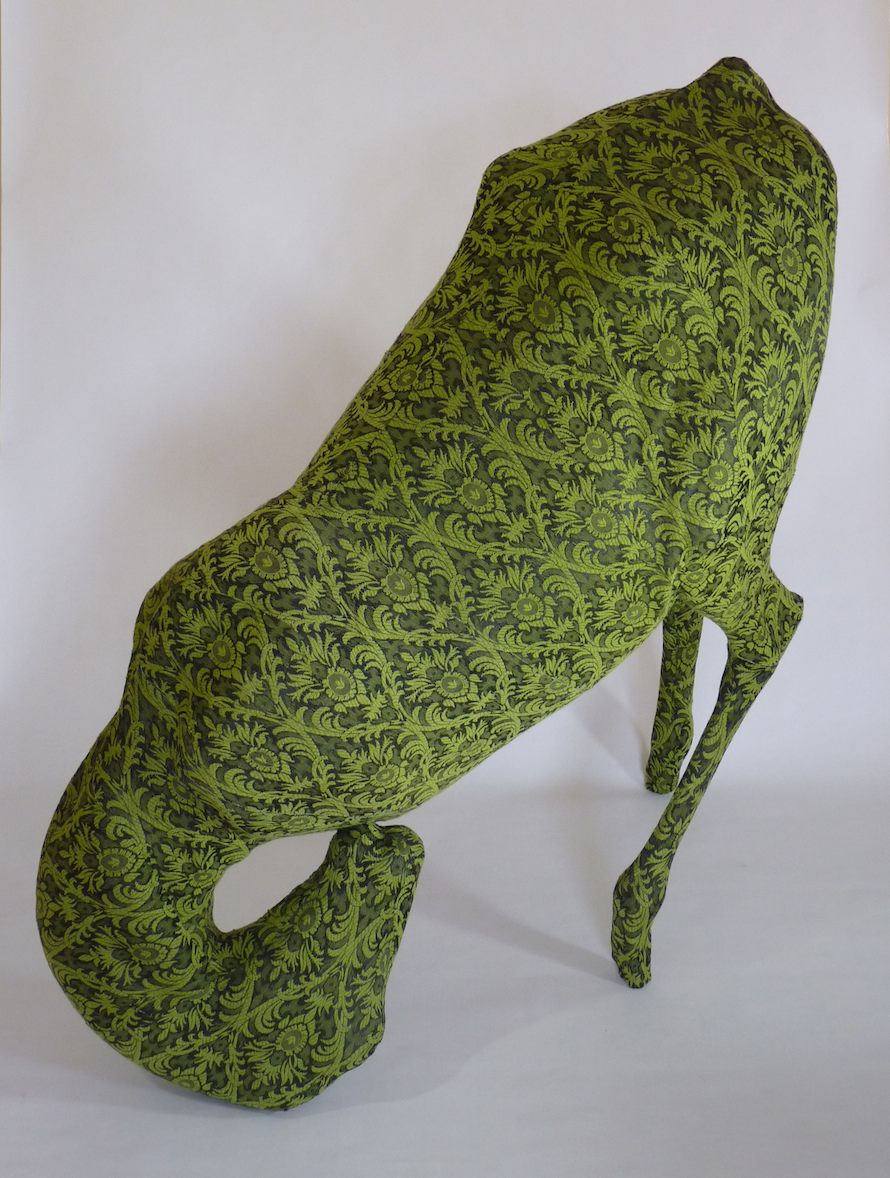Are your animals alive to you in any sense?
Misako Inaoka:In my mind they’re alive. Nothing is complete or rigid, and everything is in the process of change and transformation, and therefore alive, I believe.
TMN:And sad! In “Copper Deer,” the sculpture is lustrous, but also headless, posed submissively.
MI:The “Copper Deer” pose is very submissive. It stands like a small and vulnerable baby deer, seeking your protection. Although it has a glamorous skin of copper sequences, it is fragile, and delicately stands on flower legs.
TMN:Do you have a favorite sculpture in this show?
MI:My favorite piece is “Sprout.” The form reminds me of a sprout pushing out of the earth, beginning new life. It’s in an awkward position just trying to lift up its head; it makes me want to cheer him up and encourage him.
TMN:When are you, as an artist, most uncomfortable?
MI:I get uncomfortable when I’m asked what my work means, especially when I am still in the process of making new works, and not sure what direction it’s leading to. Often I don’t know what they mean for a long after I’m finished making, and often I don’t even want to know the answer.
Making art is the way of processing unclear thoughts and emotions, and art is the byproduct, so there is no meaning to artwork in a way. Maybe there is no one answer, but many answers, depending on who sees the work, and when.
TMN:But if you don’t know what a piece is supposed to be during the process of its creation, how do you edit yourself?
MI:I guess I should say I’m not “clear” of what each piece is about. But my overall theme is clear and similar for years, about nature and the artificiality of nature around us. I make decisions often based on intuition, forms, and feelings, rather than using my head for “thinking.” Like using only one side of brain, maybe?
TMN:Looking at the new show in light of your past work, your absurdities are very palpable. They’re only a click away from nature.
MI:I think my work is very close to reality. My work is not a creation of total imagination, but a projection of reality in an absurd form. There are so many mutations, hybridizations, and extremely fast evolutions happening in the wild as well as being forced in laboratories. We, the humans, have been playing with the idea of cell splitting, GMO, hybridization, etc. Nature has been responding with natural mutation and evolution to adjust to the fast-changing environment, so my work is exaggeration of reality in a way.
There are many “absurd” animals in nature already, such as elephants, giraffes, zebras, and the narwhale. More rare and less-known species have been found in the deep sea and in jungles in recent years. If my child grows up seeing my work, nothing will seem absurd. The line between what is absurd, what is real, what is natural becomes very unclear.
